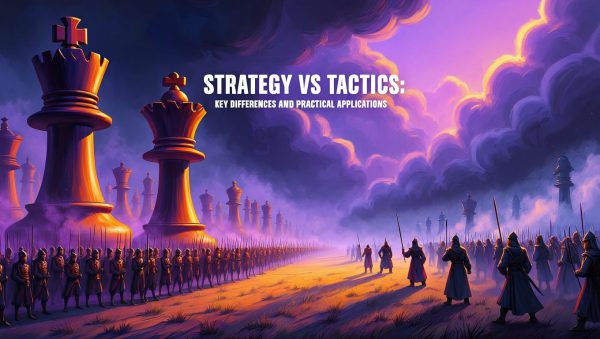
Smart Money vs. Dumb Money: A Chart’s Brutal Truth
“The wise man anticipates the storm and builds his fortress; the fool dances in the rain and curses the flood.”
Feb 28, 2025
The Lemming Theory and the Madness of the Crowd
The financial world is a battlefield, and the Smart Money vs. Dumb Money chart exposes who’s winning and who’s about to be slaughtered. This isn’t just about numbers; it’s about psychology, manipulation, and the brutal efficiency of capital flow. Smart money—hedge funds, institutional players, and seasoned traders—dictates the game. Dumb money—retail investors, emotional speculators, and FOMO-driven buyers—react, often too late.
The Lemming Theory perfectly encapsulates this phenomenon. Masses rush toward a so-called golden opportunity, oblivious to the cliff ahead. History is littered with examples: the dot-com bubble, the housing crash, meme stocks, crypto mania—every cycle sees retail investors piling in at the worst possible time. They buy tops, panic at bottoms, and fuel liquidity for smart money to exit or enter at prime moments.
This is where the Smart Money vs. Dumb Money chart becomes an unparalleled weapon. It tracks capital flow and sentiment, revealing when dumb money is euphoric—blissfully unaware of the looming crash—and when smart money is quietly accumulating while fear paralyzes the masses. This data isn’t just useful; it’s essential for survival.
How the Herd Gets Played
The meme stock frenzy of recent years provides a textbook example. Fueled by online hype, retail traders drove struggling companies to astronomical valuations. The media fanned the flames, reinforcing the illusion of invincibility. But behind the scenes, smart money was offloading shares, raking in profits while the herd congratulated itself. The inevitable collapse left dumb money holding the bag, wondering what went wrong. The answer? They ignored the chart.
Mass psychology dictates that the crowd will always be wrong at key turning points. The fear of missing out (FOMO) blinds rational judgment, and panic selling accelerates losses. The lemmings keep running until there’s nothing left but a sheer drop.
Exploiting the Madness
For those willing to detach from emotion and read the signs, the Smart Money vs. Dumb Money chart becomes a roadmap to profit. When dumb money reaches peak euphoria, the seasoned investor exits. When fear reigns supreme, the smart investor accumulates. Simple in theory, ruthless in execution.
The bottom line? Ignore the herd, follow the data, trade like smart money, or prepare to be its next meal.
Sentiment, the Unseen Force
Sentiment, an elusive yet potent force, shapes the financial landscape, often operating beneath investors’ conscious awareness. The invisible hand pulls the strings, influencing the rise and fall of markets. At its core, sentiment reflects the emotions of fear and greed, which drive the herd mentality.
Consider the impact of the COVID-19 pandemic on market sentiment. Fear gripped the financial world as the crisis unfolded, sending shockwaves through the markets. Yet, as Mark Twain might quip, “The reports of my death are greatly exaggerated.” Like a resilient phoenix, the markets rose from the ashes, showcasing the fleeting nature of sentiment and the underlying strength of the global economy.
The Interplay of Technical Analysis and Market Sentiment: Smart Money vs. Dumb Money
In the intricate world of finance, understanding market dynamics requires more than just a cursory glance at price movements; it demands a deep dive into technical analysis and the psychology of market participants. The Smart Money vs Dumb Money chart is vital for discerning investors, offering insights into the underlying trends and sentiments that drive market behaviour. By analyzing this chart alongside technical indicators, investors can better navigate the complexities of market fluctuations and identify opportune moments for investment.
Technical analysis is often viewed as a mysterious art, revered for its ability to map the ebbs and flows of the market. It provides investors with a roadmap to anticipate trends and make informed decisions. For instance, during the COVID-19 pandemic, while many investors succumbed to panic selling, astute technical analysts recognized critical support levels and the potential for a market rebound. They interpreted the Smart Money vs. Dumb Money chart with other indicators, such as moving averages and volume analysis, to spot divergences that signalled a turning point. This approach proved prescient, as the markets rebounded strongly in the following months.
The recent volatility in the S&P 500 during the March 2020 crash exemplifies this interplay. Technical analysts identified a double bottom pattern—a bullish reversal signal—indicating that intelligent money was accumulating positions amid widespread fear. This analysis, combined with insights from the Smart Money vs. Dumb Money chart, allowed investors to capitalize on undervalued assets, leading to significant gains as the market recovered.
Novel Strategies: Capitalizing on Market Corrections
In addition to traditional technical analysis, innovative strategies can enhance investment outcomes, particularly during market corrections. One such strategy involves selling puts to finance the purchase of calls when the market experiences a downturn. This approach capitalizes on soaring put premiums during heightened volatility, allowing investors to position themselves advantageously for a market rebound.
Historically, data shows that investors who enter the market after significant corrections tend to outperform those who invest during stable periods. For example, following the 2008 financial crisis, savvy investors who bought into the market during the downturn reaped substantial rewards as the economy recovered. By selling puts, investors can generate income while simultaneously setting up a potential entry point for calls at favourable prices.
This strategy aligns with the principles of contrarian investing, where Smart Money seeks to exploit the irrational behaviour of Dumb Money. Warren Buffett famously said, “Be fearful when others are greedy and greedy when others are fearful.” By leveraging the insights from the Smart Money vs Dumb Money chart, investors can identify when sentiment is overly pessimistic, signalling a prime opportunity to deploy capital.
The fusion of technical analysis with market sentiment provides a robust framework for navigating the complexities of investing. By understanding the dynamics of smart and dumb money and employing innovative strategies during market corrections, investors can enhance their decision-making processes and position themselves for long-term success. This holistic approach improves the probability of favourable outcomes and empowers investors to thrive in an ever-evolving financial landscape.
The Art of Identifying Smart Money
Distinguishing smart money from dumb money is a nuanced endeavour akin to deciphering the brushstrokes of a Renaissance masterpiece. The Smart Money vs. Dumb Money chart provides a visual representation, yet interpreting it demands skill, patience, and a willingness to see beyond the noise.
Smart money operates in the shadows, moving long before the crowd catches on. It doesn’t scream for attention—it whispers. The seasoned investor who knows where to look can spot its footprints in subtle signals: institutional accumulation, quiet insider trading, and volume shifts before major price movements.
For instance, during the coronavirus-induced market crash, retail investors panicked and dumped stocks at a loss. Meanwhile, insiders—the architects of these companies—were buying at a feverish pace. Why? because they understood the value of seeing only doom when the masses could see it. In hindsight, their moves seemed obvious. In the moment, they were invisible to those who lacked the discipline to think beyond fear.
The lesson? Follow the scent of money, not the noise of the crowd. Insider trading data, institutional fund flows, and divergence in sentiment indicators all provide clues about where the smart money is headed. But recognizing these signals means abandoning the fantasy of easy money and embracing the reality that patience and observation lead to wealth.
Practical Applications and Real-World Successes
The Smart Money vs. Dumb Money concept isn’t theoretical—it’s a proven reality that has shaped financial history. Consider George Soros, a man whose understanding of sentiment and positioning allowed him to break the Bank of England. He didn’t just ride the waves of market psychology—he created them. His short sale of the British pound wasn’t luck. It was a calculated move, backed by an intricate understanding of how central banks, traders, and economic policy interact.
Now, contrast that with the herd. The recent meme stock mania, where retail traders bid up bankrupt companies in a frenzy, is the epitome of dumb money in action. While some made fortunes, most were left holding the bag. Yet even in this chaos, smart money was at work. Hedge funds that understood sentiment and technical analysis positioned themselves early, riding the wave up and exiting before the inevitable collapse.
This interplay between smart and dumb money is timeless. The question is, which side will you be on? Those who succeed in markets don’t just study charts—they study human nature. They recognize that history doesn’t repeat, but it rhymes, and those who learn the tune profit while others flail.
Conclusion: Masters of the Market Dance
The market isn’t a guessing game; it’s a structured battlefield where the uninformed are slaughtered and the disciplined thrive. Every boom, every bust, every emotional overreaction follows a predictable script—one that smart money reads fluently and dumb money ignores.
The truth is brutal: Most traders fail because they refuse to see what’s before them. They chase hype, follow the noise, and react emotionally. Meanwhile, the disciplined investor watches sentiment indicators, tracks institutional money flow, and waits for the perfect moment to strike.
Consider this—while the masses panic and dump their holdings in a fire sale, smart money is there, silently accumulating wealth. When euphoria blinds retail traders into thinking the market can only go up, smart money is already positioning to short. It’s not magic. It’s not a secret. It’s simply the unwavering ability to think independently and act decisively when others are paralyzed by emotion.
The Smart Money vs. Dumb Money chart isn’t just a tool—it’s a declaration of financial survival. In stark clarity, it shows that the game is rigged against those who refuse to learn the rules. But for those willing to step out of the herd to master the art of patience and discipline, the rewards are immense.
The choice is clear. Will you be another casualty of mass delusion, or will you rise above, thinking like those who shape the markets rather than those who react to them?
Your fate is in your hands. The time to decide is now.














